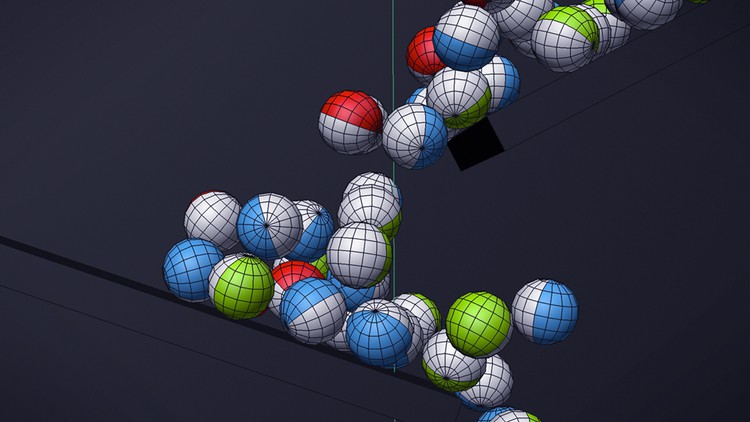
An introductory project-based course for the aspiring 3D motion graphic artist.
What you will learn
The fundamentals of 3D Simulation to help students gain an understanding of the tools and techniques used in the motion graphics industry.
How 3D Simulation and Dynamics work in Cinema 4D.
The use of the MoGraph Cloner, effectors, rigid body and collider body tags
Controlling simulation with the tag settings friction and bounce
3D Modeling, cloning along a spline, the use of emitters, simulation tags and render settings
Using various geometry to create an interesting animated effect consisting of cloned spheres and a maze-like structure
Description
In this series of lessons we will cover the fundamentals of 3D Simulation to help you gain a basic understanding of the tools and techniques used in the industry.
Part 01: Introduction to 3D Simulation Techniques
Note➛ Make sure your 𝐔𝐝𝐞𝐦𝐲 cart has only this course you're going to enroll it now, Remove all other courses from the 𝐔𝐝𝐞𝐦𝐲 cart before Enrolling!
- Overview of the Mograph cloners, random effector, rigid body tag, collider body tag, friction and bounce settings
- Experimentation with parametric primitives and various geometry for different dynamic effects
- Splines, lathe nurbs, rigid body tag, collider body tag, friction and bounce settings
- Create a vase being filled with spheres
- Using an emitter with a rigid body sphere to start a simulation
- Work with the initial linear velocity
- Overview of the random, formula, push apart and step effectors
- Use of spherical, cylindrical, cone, linear, radial fields and falloff settings
Part 02: Domino’s Project
- Model the domino’s with splines and extrude nurbs
- Use domino images from the asset browser to texture the model
- Use the selection field to apply materials to the front, back and side of dominos
- Use of the MoGraph Cloner in object mode in conjunction with a spline to duplicate the dominos along a path
- Adjust the cloner’s distribution settings for evenly spaced dominos
- Use rigid body and collider body tags to set-up the simulation
- Use and emitter to create the initial impact by setting the initial linear velocity for domino’s to fall
- Refine bounce, friction and rigid body settings
- Define final output render settings to complete the animation
Part 03: Maze Project
- Model the 3D environment and add a collider body tag
- Create a sphere inside a cloner and assign a rigid body tag to start the simulation
- Model the maze geometry using parametric primitives
- Create shelves, front and add collider body tags
- Adjust the maze geometry to control the simulation
- Duplicate the sphere cloner to add additional animation to the scene
- Create sides to the maze to prevent spheres from falling outside of it’s borders
- Use the display tag to hide geometry in the perspective view
- Apply procedural Cinema 4D materials to the maze and spheres
- Use gradients on the spheres and refine their parameters for added visual interest
- Create a camera animation to follow the simulated sphere movement
- Define render settings for final output
English
language
Content
Part 01: Introduction to 3D Simulation Techniques
Mograph Cloner
Mograph Cloner Continued
Effectors and Fields
Part 02: Domino Project
3D Modeling and Texturing
MoGraph Cloner
Dynamics
Rendering
Part 03: Maze Project
MoGraph Cloner
3D Modeling the Maze
Refinement
Texturing
Rendering